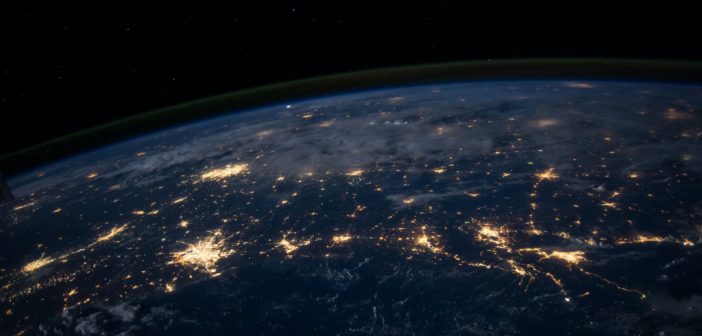By: Natalia Kurkova, Volunteer
Wuhan, China
The severe acute respiratory syndrome,SARS-CoV-2, also known as COVID-19, was first recorded on Dec. 1, 2019 in Wuhan, China. It was declared a pandemic by the World Health Organization (WHO) in March 2020. According to National Geographic, a pandemic is defined by the number of cases, rather than the severity of the symptoms. The first victims of the disease in Wuhan were identified as pneumonia patients. The initial epidemic explosion in China was undisclosed for two months.
The initial COVID-19 cases in China were linked to the Huanan Seafood Wholesale Market and contact with patients with pneumonia-like symptoms, according toThe New England Journal of Medicine.
On Jan. 23, Chinese authorities decided to bring Wuhan, with a population of about 11 million, under lockdown. The surrounding cities were brought under lockdown shortly after. Schools and universities were closed. Transportation all around the city and into the city was cancelled. No exemptions were made for emergencies or medical needs. Moreover, people were not allowed to drive their private cars. In some parts of the cities, only one member of the family was allowed to go outside of the house every two days to buy groceries and medicine. Otherwise, people were forced to stay inside. Rules became stricter when authorities began going to people’s houses, checking their health, and forcing anyone who was sick to quarantine.
As of Sept. 12, the total number of COVID-19 cases in China is 85,184, with 80,399 recorded recovery cases. The death toll as a result of the pandemic has been steady at 4,632 since mid-April.
Italy
According to the Centers for Disease Control and Prevention (CDC) website, Italy is currently at level three of the COVID-19 precautionary measures. The estimated contamination risk in Italy is still high. As of Sept. 15, the number of cases in the country adds to 288,761, with over 35,000 deaths. On the brighter side, 213,950 Italian citizens have recovered from the virus.
Some authorities are blaming the young Italians for Italy’s “second wave.” The younger adults continue to attend parties and travel to neighboring countries such as Croatia and Greece.
Earlier this summer, for a brief period of time, Italy opened its doors to tourists. Now that winter season is slowly approaching, Italy once again warns travelers to avoid the country. This is bad news for Italy as profits from tourists supported a large portion of the country’s economy. The financial loss from international tourists at the end of 2020 is estimated to add to over $29 billion, according toCNN.
Giorgio Palmucci, president of the Italian national tourist board, said, “All Italian cities are expected to be significantly impacted, particularly those more dependent on international visitors like Venice, Florence and Rome.”
Because of the damage caused by COVID-19 to the Italian economy, the EU instituted financial help for the citizens in the amount of $2.8 billion. Some citizens claim that the help is not enough and are asking for more support from the government.
The Harvard Business Review considers the difficult economic situation that Italy is in now as the result of the Italians’ initial skepticism and negligence of the warnings of the upcoming pandemic catastrophe. In February, several Italian politicians publicly demonstrated their handshaking as a sign that there was nothing to fear. Another mistake of Italian authorities was that they applied gradual restrictions to social activities and events. This proved to be disadvantageous as the gradual restrictions did not coincide with the virus’ hasty spread.
USA
Once the virus spread has been officially established as a pandemic, WHO was lawfully allowed to make decisions on financial and political policies in attempts to contain the virus. Some of those decisions, enacted in the U.S. by the CDC, were to establish social-distancing policies, canceling athletic events, and closing schools.
Back in February, when the scope of COVID-19 was still under question, health screening in only three U.S. airports was conducted, JFK International, San Francisco International, and Los Angeles International.
Up until August, passengers coming into the U.S. from international flights were taken to one of the 13 airports with enhanced screening procedures. Passengers on international flights were also required to self-quarantine for two weeks. This requirement, along with the enhanced screening, has been eliminated last month, according toAFAR. This decision was made after TSA officials calculated that less than 15 passengers on international flights had been infected with COVID-19.
Several theories regarding the first COVID-19 case in the U.S. exist. Trevor Bedford, a computational biologist at the Fred Hutchinson Cancer Research Center in Seattle, claimed that the U.S. outbreak started with a man in Washington who returned from a trip to Wuhan, China. The researcher later denied that claim, however. Another theory is that after the president’s ban on travel to China at the beginning of February, a lot of American citizens returned home and brought the virus back with them.
As of Sept. 15, there are 6,751,883 COVID-19 cases in the U.S, with 199,164 deaths. The number of patients who recovered from the virus is 4,029,037.





